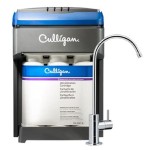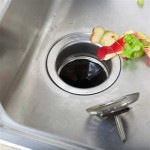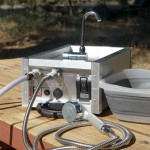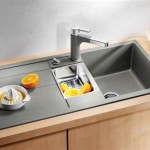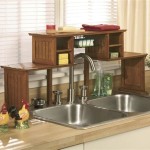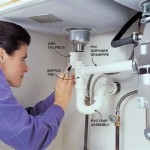How to Unclog a Kitchen Sink With a Plunger
A clogged kitchen sink is a common household problem that can be frustrating and inconvenient. The good news is that you can often clear the blockage yourself with a simple tool: a plunger. Plungers are designed to create suction to dislodge debris from drains, effectively clearing blockages. With the right technique and a few simple steps, you can unclog your kitchen sink and restore proper drainage.
1. Prepare the Sink and Plunger
Before you start plunging, it's essential to create the optimal conditions for success. Begin by removing any visible debris from the sink drain, such as food scraps or hair. This will help the plunger create a better seal and maximize its effectiveness. Next, fill the sink with enough water to cover the plunger's bell. The water will act as a medium for the plunger to create pressure and help dislodge the blockage. Ensure the water level is high enough to cover the plunger's bell completely.
2. Position and Plunge
Now, it's time to position the plunger for optimal results. Make sure the plunger's bell is fully submerged in the water and centered over the drain opening. Press the plunger firmly down, creating a tight seal with the drain. Once you have a strong seal, begin to plunge up and down with a forceful, rhythmic motion. Imagine you are trying to pump air into a tire. Repeat this process for several minutes, applying consistent pressure. During the plunging action, make sure you keep the plunger perpendicular to the sink drain. As you plunge, you may hear a "gurgling" sound, which is a good sign that the plunger is working. If there is no gurgling sound, there might be an issue with the plunger seal or the blockage itself.
3. Repeat and Assess
After several minutes of plunging, check to see if the blockage has cleared. If the water starts to drain, you're on the right track. However, if the sink remains clogged, there may be a deeper blockage that requires further attention. In such cases, it's recommended to repeat the plunging process for another few minutes. If the blockage persists, you might need to explore other options, such as utilizing a plumbing snake or chemical drain cleaner.
4. Maintenance and Prevention
Once you've successfully unclogged your sink, it's important to take steps to prevent future blockages. Avoid pouring grease or oil down the drain, as these substances can solidify and create obstructions. Use a drain strainer to catch food particles and hair before they reach the drain. Regular drain maintenance is also essential. You can pour a mixture of baking soda and vinegar down the drain to help break down grease and grime, followed by a flush of hot water. These simple practices can significantly minimize the chances of future clogs and help keep your kitchen sink running smoothly.

How To Plunge A Sink Unclog Drains Quickly Easily

Unclogging Kitchen Sink With A Plunger Try Easiest Solution First

How To Unclog A Double Sink Clumsy Crafter

How To Use A Plunger The Right Way

How To Use A Sink Plunger Optimised Plumbing Services

5 Things To Do Unclog Your Kitchen Sink Ivey Engineering

How To Unclog A Sink The Experts Simple Steps Drain

How To Plunge A Sink Unclog Drains Quickly Easily

How To Unclog A Sink In Your Home Racv

How To Unclog A Drain With Plunger
